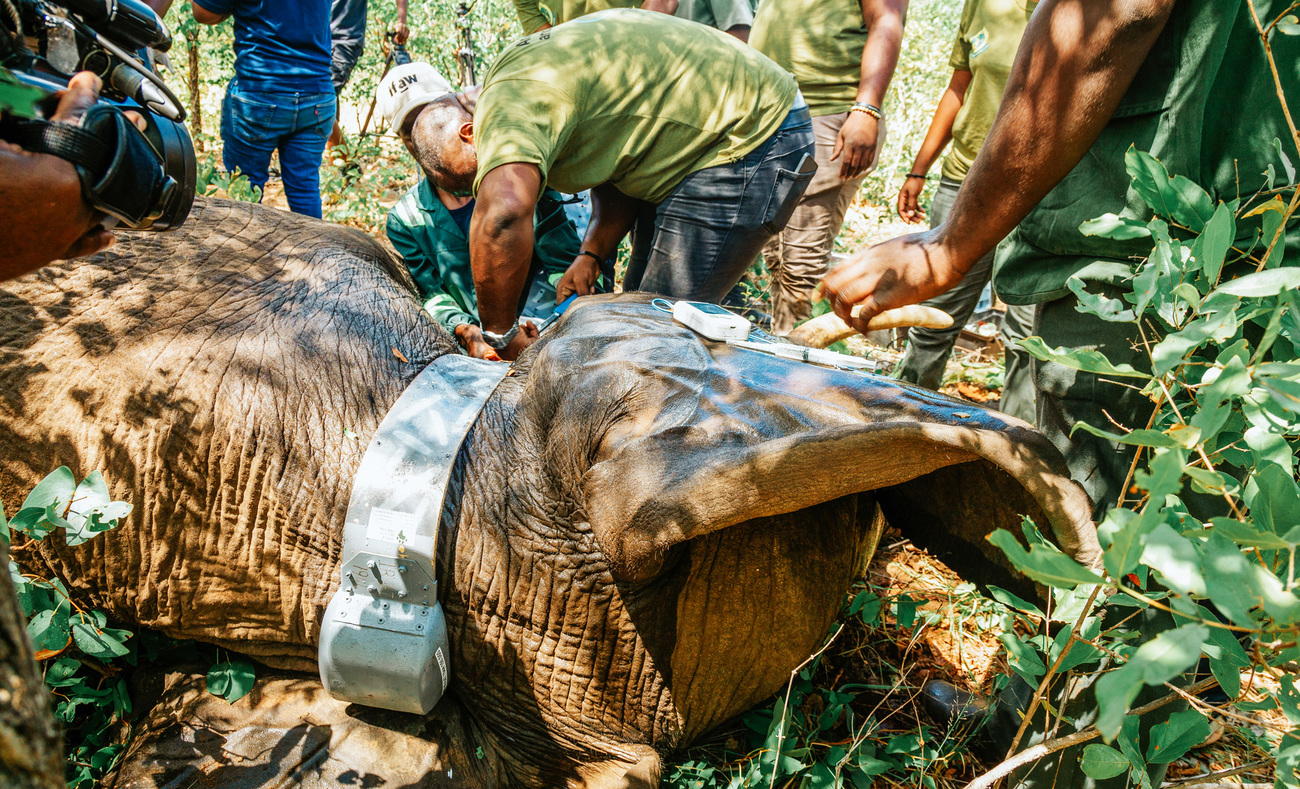Cutting edge GPS technology to track elephant movements
Cutting edge GPS technology to track elephant movements

(Harare, 12 April 2024) – Conservationists in Zimbabwe are fitting GPS-enabled tracking collars to eight African savannah elephants to discover how constructing a nearby dam may alter their movements.
Experts anticipate that the construction of the Gwayi-Shangani Dam, less than 50km east of Zimbabwe’s Hwange National Park, has the potential to alter how elephants use this landscape significantly.
By tracking these elephants, the project led by ZimParks, and IFAW aims to understand how the dam and other human footprints in the landscape are linked to the movement patterns of elephants.
Intended to facilitate real-time tracking, the collars will enable park authorities and IFAW, a key conservation partner, to monitor elephant movements in the buffer area around the park. This will aid conservation and promote a peaceful co-existence between people and wildlife by mitigating human wildlife conflict in the landscape.
Data captured will be analysed to better understand spatial movement, habitat usage, and seasonal migrations over two years. This will generate insights into how elephants utilize the human-dominated areas on the periphery of Hwange NP and its environs.
The elephant collaring operation is scheduled to begin in early April and is expected to run for up to 15 days. The operation will target six matriarch elephants, that lead family herds in the communal areas between Hwange NP and Sikumi and Mzola Forest reserves and two bull elephants. By fitting collars to the six matriarchs, the two organizations expect to track the movements of more than 60 elephants forming the family herds. Simultaneously, the bulls will be monitored for their activities.
Phillip Kuvawoga, Landscape Conservation Director at IFAW, said, “It’s always exciting when you see innovative technological developments change how we work. This elephant collaring project could enhance our conservation efforts and inform future land-use planning in the greater Hwange ecosystem.
“Conservation interventions should be based on sound science, and by tracking these animals, we can forecast and map potential human-elephant conflict hotspots to guide management interventions,” says Kuvawoga.
“Recent studies confirm that elephants spend much of their time outside protected areas, risking conflict with humans. Better understanding their movement patterns will help inform sound long-term management of the elephants,” says Nobesuthu Ngwenya, National Elephant Coordinator at ZimParks.
ENDS
Press Contacts:
Luckmore Safuli
Communications Officer, Southern Africa
m: +263 77 252 7736
e: lsafuli@ifaw.org
Christina Pretorius
Director, Communications Africa
m: +27 82 330 2558
e: cpretorius@ifaw.org
Related content
Our work can’t get done without you. Please give what you can to help animals thrive.